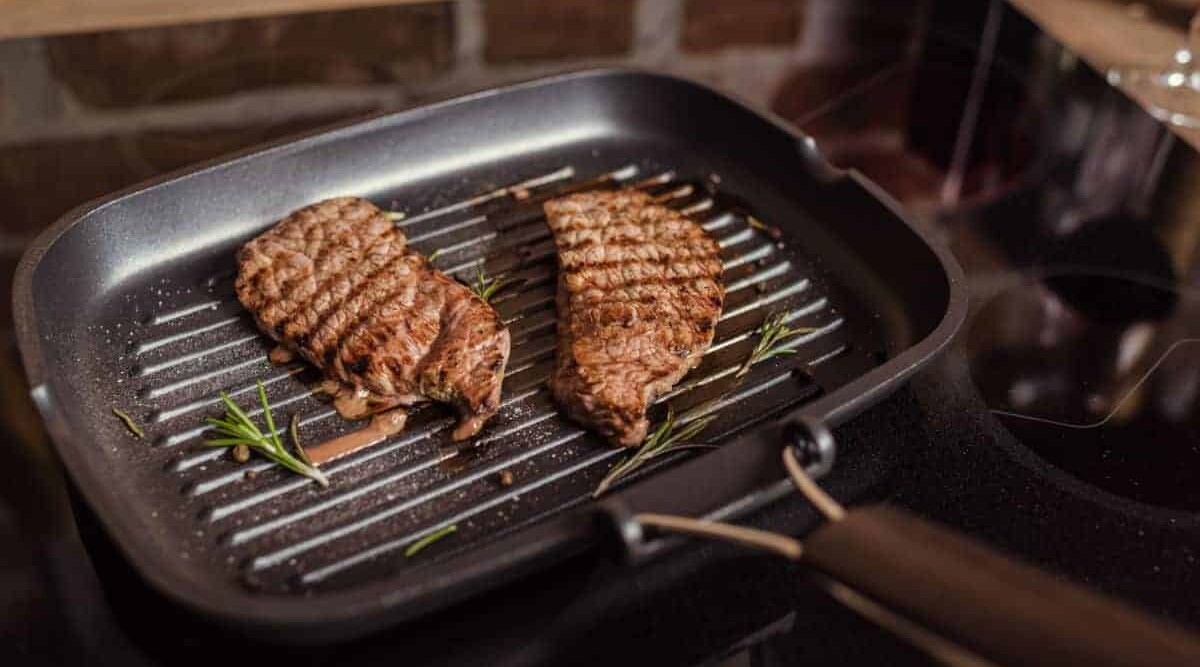
In this article on how to grill indoors, we’ll look at the common-sense dangers of bringing the outdoors in, as well as equipment and techniques for indoor grilling done correctly and safely.
We have gathered here together because we feel there’s nothing better than meat turned over a fire — or at least charcoal or wood pellets.
But there are times when grilling in the near or great outdoors is not an option. Should we deprive ourselves of grilled flavor?
NEVER! We’ll take our party inside! And here’s exactly how, with our guide on how to grill indoors while still aiming for an authentic, smoky grilled taste.
While it’s true that charcoal and wood flavor cannot be completely replicated indoors, it is possible to enjoy good grilled food from the within the comforts of home.
Jump to:
The Danger of Outdoor Grills Indoors

The prime rule of grilling indoors: NEVER use outdoor grills indoors.
Whatever creative means you might dream up for diverting the smoke out of the window or up the stove exhaust fan just won’t work. The reward for firing up an outdoor grill — even a small one — indoors can be fatal.
According to the U.S. Centers for Disease Control and Prevention:
“More than 400 Americans die from unintentional CO [carbon monoxide] poisoning not linked to fires, more than 20,000 visit the emergency room, and more than 4,000 are hospitalized.”
Please don’t put yourself or those you love in the next set of statistics. Keep outdoor grills outside, away from doors, windows, and overhangs (carports, balconies).
How to Grill Indoors: The Right Tools for the Job
What does work indoors are the following pieces of equipment
Broiler
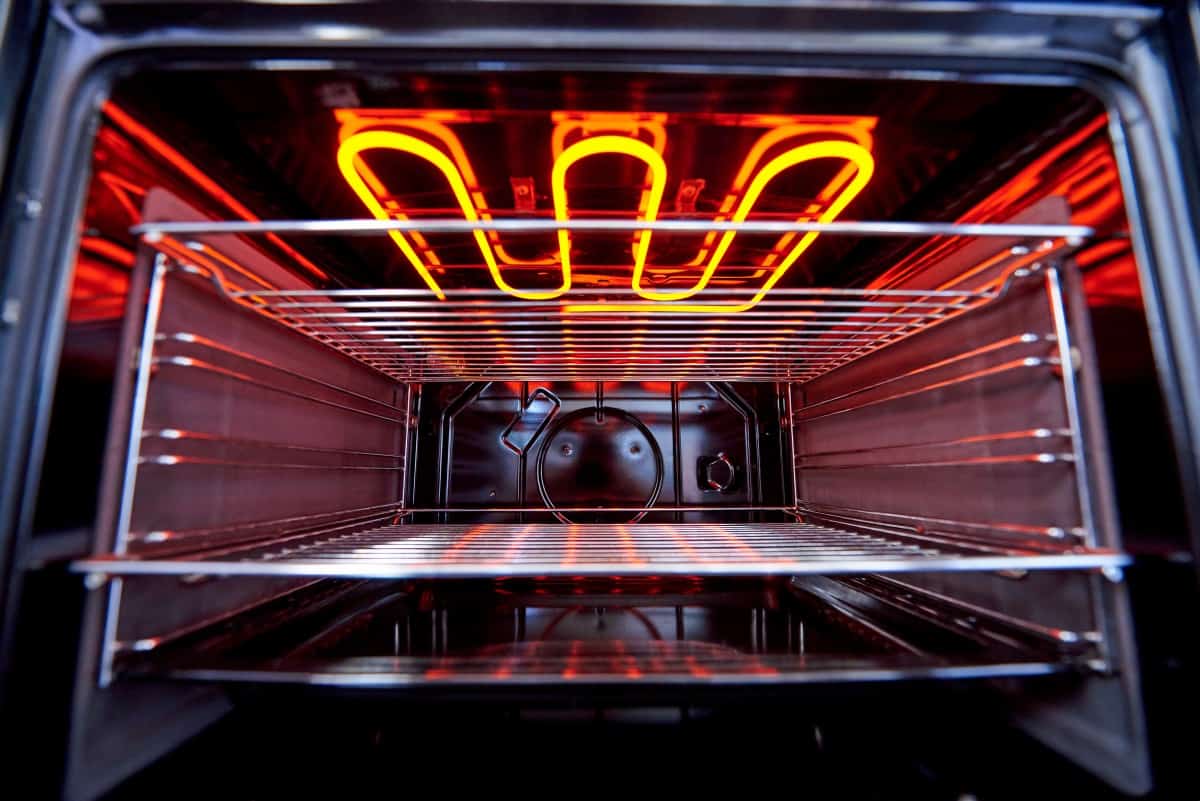
The heating element attached to the roof of your oven or, in older model stoves, the drawer below the oven.
Broilers can fire along at over 700^F, in less than 15 minutes, you’ve got sear marks and a Maillard crust. You’ll find more information in our post on broiling.
Contact Grills
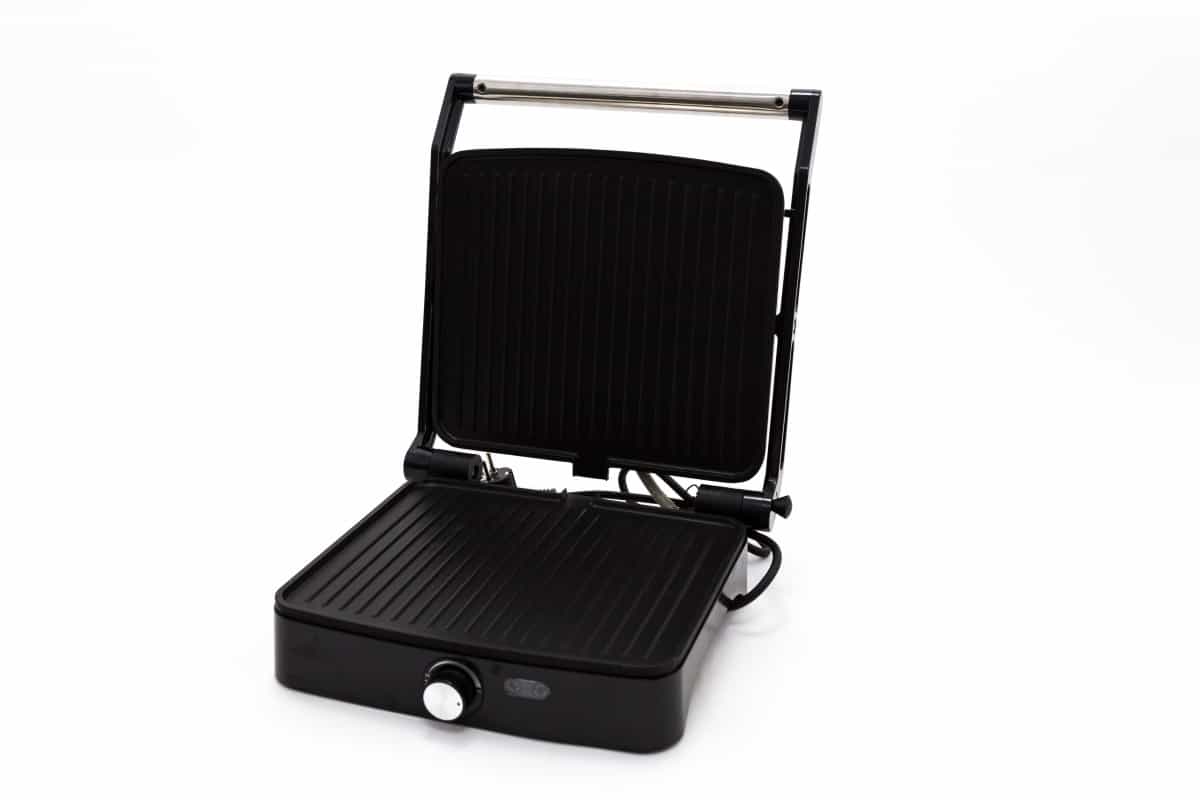
Many models have a lid attached by a hinge. These are called contact grills. Some copy the sloped surface that is the hallmark of the classic George Foreman grill while others sit flat. They share a few basic features:
- Ceramic or non-stick ridged surface plate (which may or may not be removable for easier cleaning)
- Control panel, digital or manual (knobs and switches)
- Drip tray
- Indicator light
- Adjustable temperature
- Compact size uses little counter space when in use and simplifies storage otherwise
- Versatility — they can serve as a panini press
In his book Indoor! Grilling, grillmeister Steve Raichlen notes one drawback of this type of grill is the generation of steam as the meat is pressed between two plates. This stews, rather than grills the food.
Pressing the plates together may increase the definition of grill marks; but in our experience, it’s a sure-fire way to squeeze out all the juices and fats, creating dry food and smoke galore from the grill.
A second drawback Raichlen notes is that smaller models may lack sufficient wattage for proper grilling temperatures. This can be avoided by getting the highest wattage for the size best suited to your needs.
He recommends running your stove’s ventilation fan on high and setting the grill as close to it as possible. An open window would work, too. This will prevent the smoke alarm from triggering and, if you’re grilling fish, keep the house from smelling fishy (I’ve found that simmering cinnamon will also remedy the latter).
Other tips:
- lower the lid gently on vegetables, fish, and cake; never hard press these delicates
- clean when hot
- debone pork and veal chops for a more even cooking
Freestanding Grills
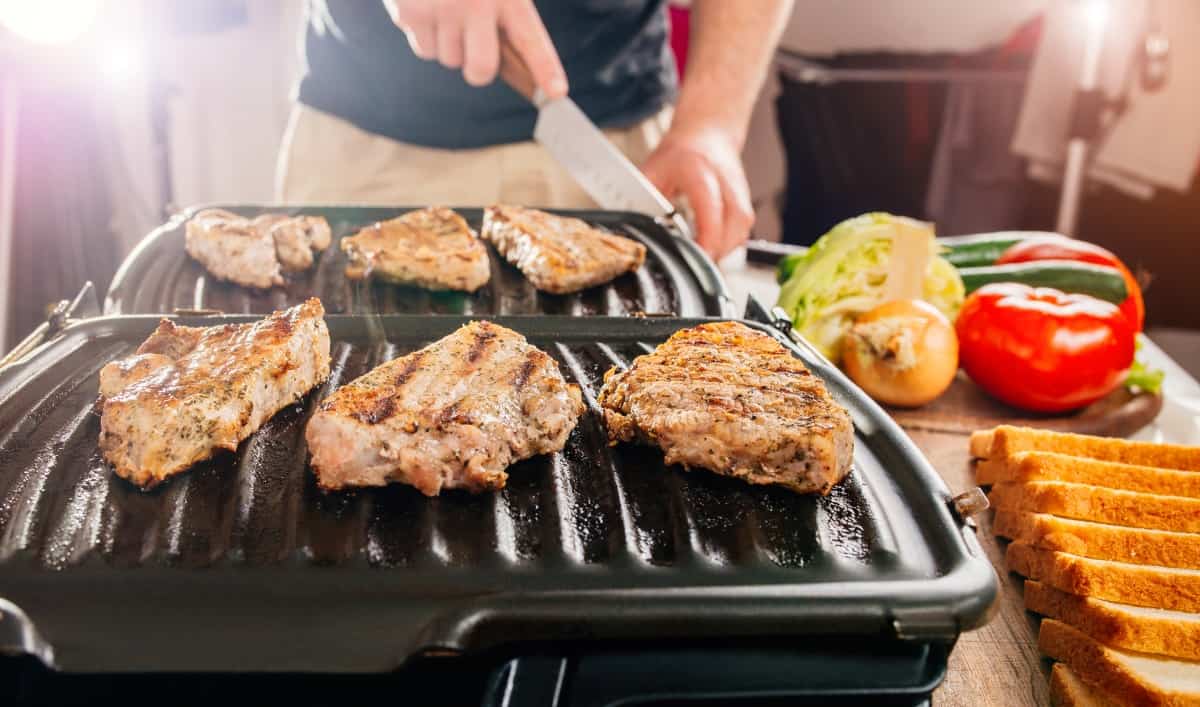
These models are cheerfully lid-free or may have a detached lid made of steel or glass. They not only provide the high heat needed for grilling, but they also provide those beloved grill marks.
The pans are generally round, square, or rectangular.
Raichlen recommends:
- Again, buy the highest wattage to get the proper grilling temperature
- Temperature control, indicator light, drip pan, and dishwasher-safe parts to make use and clean-up easy
- Placing the unit on a baking sheet to catch splatters or drips
- Use for cooking thinly sliced foods that don’t require a lot of cook time
- Preheat on high for at least 5 minutes
Stove-Top Grills
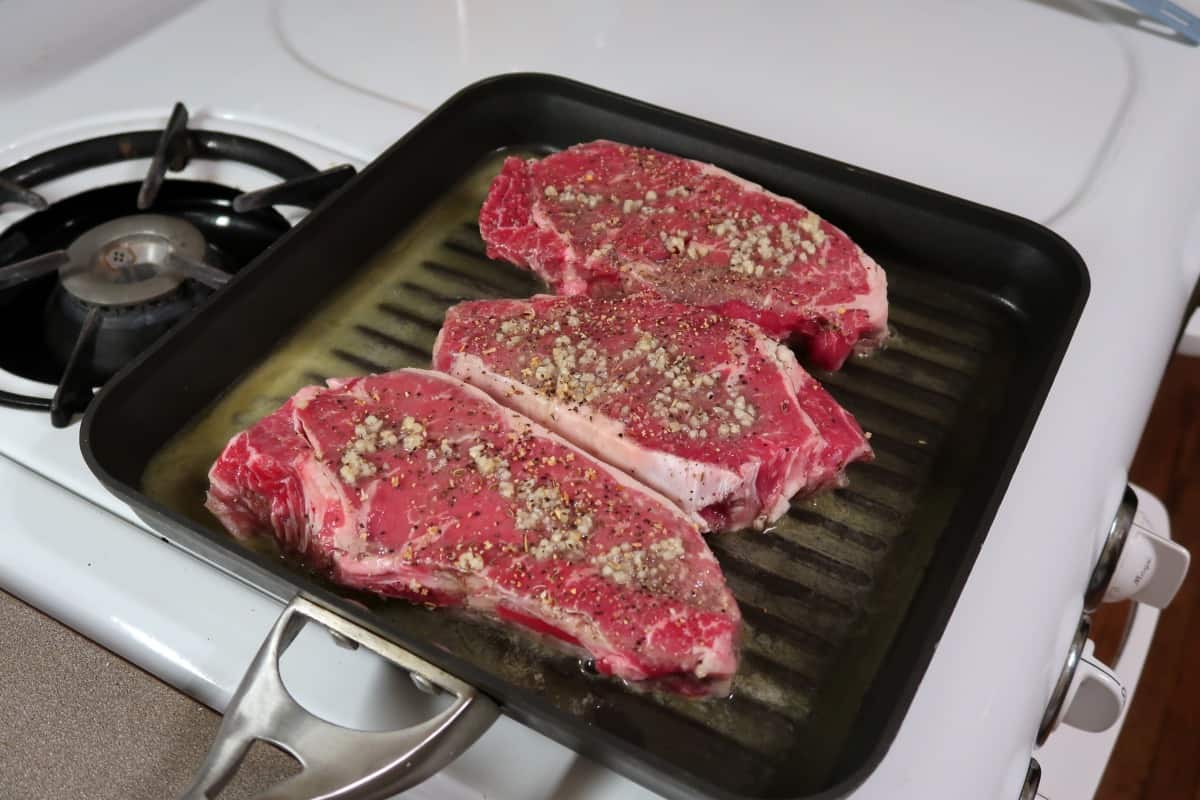
Nothing is more straightforward than a cast iron grill pan designed to sit on the stove — one burner or two — and turn out well-browned indoor grilled goodness.
They may also be called griddles which can be confusing because those are usually what the smooth-surface, low-edged pans used for pancakes and grilled cheese sandwiches are called. Which of course could technically be used for grilling if you’re okay with no grill marks. But then again, no grill marks mean more yummy brown crust, so… Yeah.
These are generally made from cast iron with a non-stick cooking surface. But there are some innovative models like the Stovetop Korean BBQ Non-Stick Grill Pan by TeChef which features a cool whirlpool pattern designed to drain fat away into a reservoir below slowly.
Raichlen’s tips for buying and using a nonelectric grill pan include:
- Choose one with high, sharp ridges for well-defined grill marks
- Preheat on medium, not high, to prevent food from unevenly cooking from the outside in
- Food should be as dry as possible to avoid burning
- Cast-iron should be properly seasoned
- Wash a new pan in hot soapy water with a stiff brush
- Rinse and dry thoroughly
- Coat the entire pan with a solid vegetable oil
- Place the pan upside down on oven rack and bake for an hour
- Remove when cool
We recommend an old-fashioned grill pan or griddle as the best and most economical method of indoor grilling. Zero setup, minimal equipment (pan, thermometer, fork, and maybe good gloves) and an easy clean-up.
Built-In Range Cooker With Grill
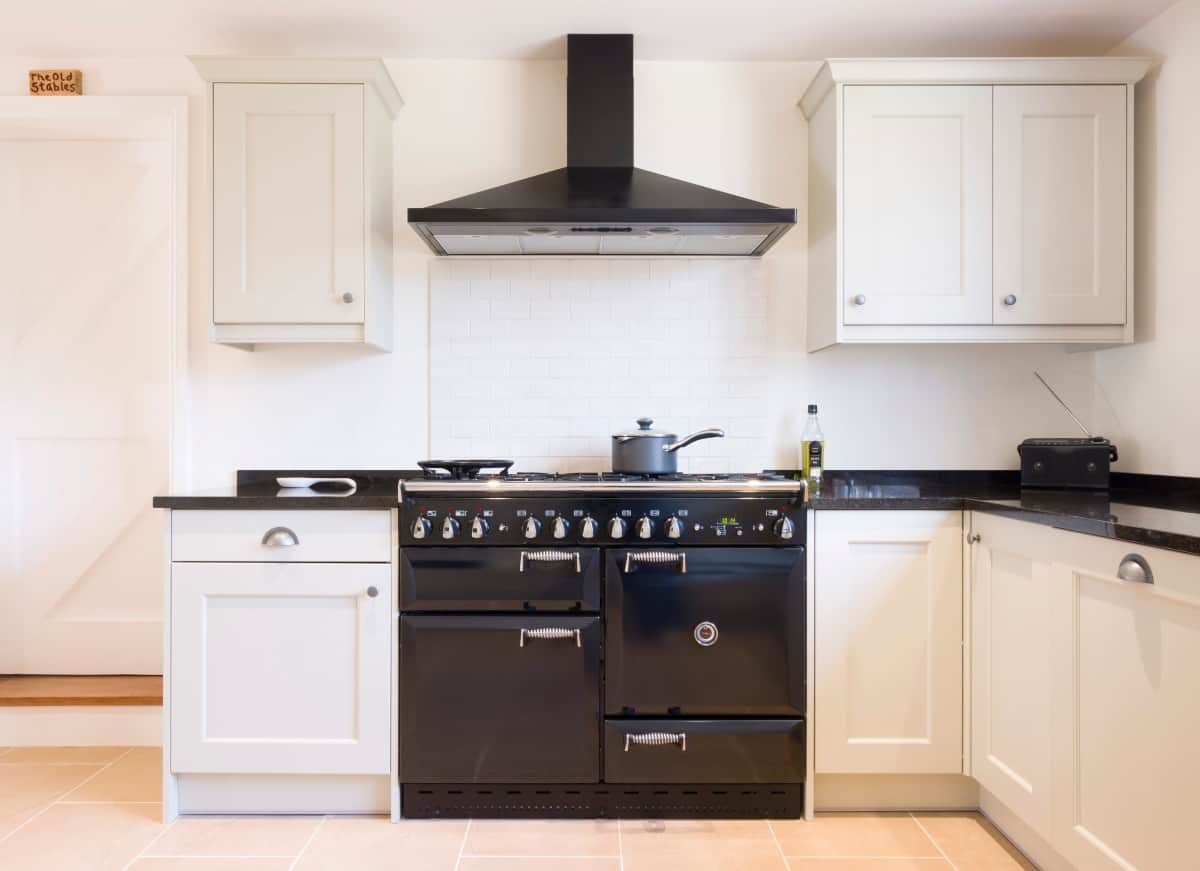
High-end electric and gas ranges give the option of replacing heating elements with an indoor grill or a griddle. Some even use wood pellets. Being a part of the stove, they sit directly beneath the ventilation fan. Tips for buying and using:
- Besides cost, base purchase decisions on questions like:
- How much grilling space you’ll need; will you regularly be cooking for two or many more?
- Is the grate nonstick or stick-resistant?
- If there is no drip pan, can foil be placed under the grate?
- How easy is it to clean?
- How good is the exhaust fan?
- Read the manufacturer’s instructions before use (and a periodic review wouldn’t hurt, I’d say)
- Measure the temperature at the front and back of the grill area for consistent heat.
CAVEAT: With all due respect to Mr. Raichlen, do not use the Mississippi test to determine the heat level. Use an infrared thermometer for precise measurements and to ensure food is thoroughly cooked.
- Preheat on high
- Be sure you know when and whether to oil the grates
- Regularly change or clean the exhaust system filter
Fireplace Grill
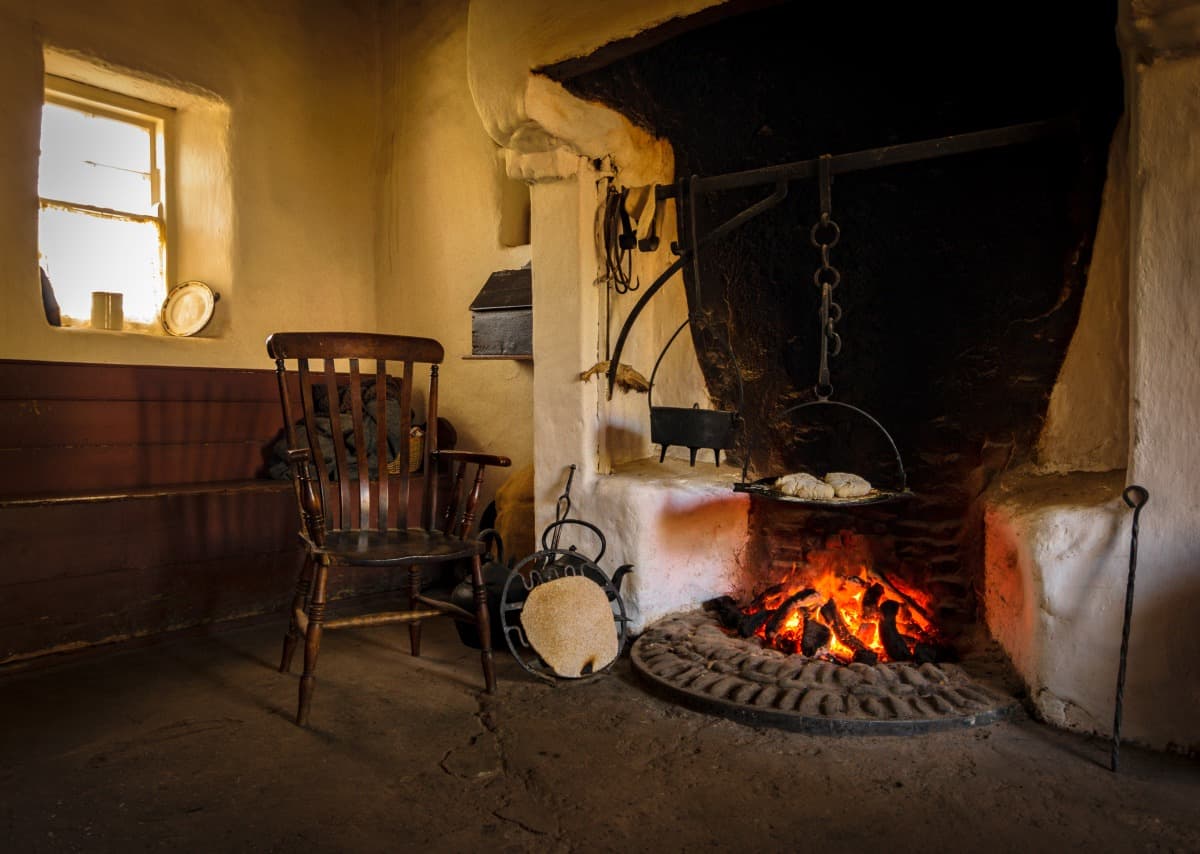
Aka hearth cooking. The idea may sound — A little too retro, but it is the only way to cook food over a wood fire indoors.
Modern fireplace grilling uses a specially-made grate set into a frame that straddles the fire or a DIY project involving an oven rack and a few bricks for height.
Raichlen’s Barbecue University details how to make more of your fireplace than a picturesque heat source.
This method includes the extra cost of regularly purchasing hardwood (unless you live near some freely accessible wood) and paying a professional chimney sweep for an annual cleaning. Which you probably do anyway. If you’ve tried this method, share your experience with us. You may garner a few converts.
Can There Be Flavor Without Smoke?
As discussed in another post, true barbecue flavor is in the smoke. But smoke can be created in the kitchen — in a good way.
Liquid Smoke
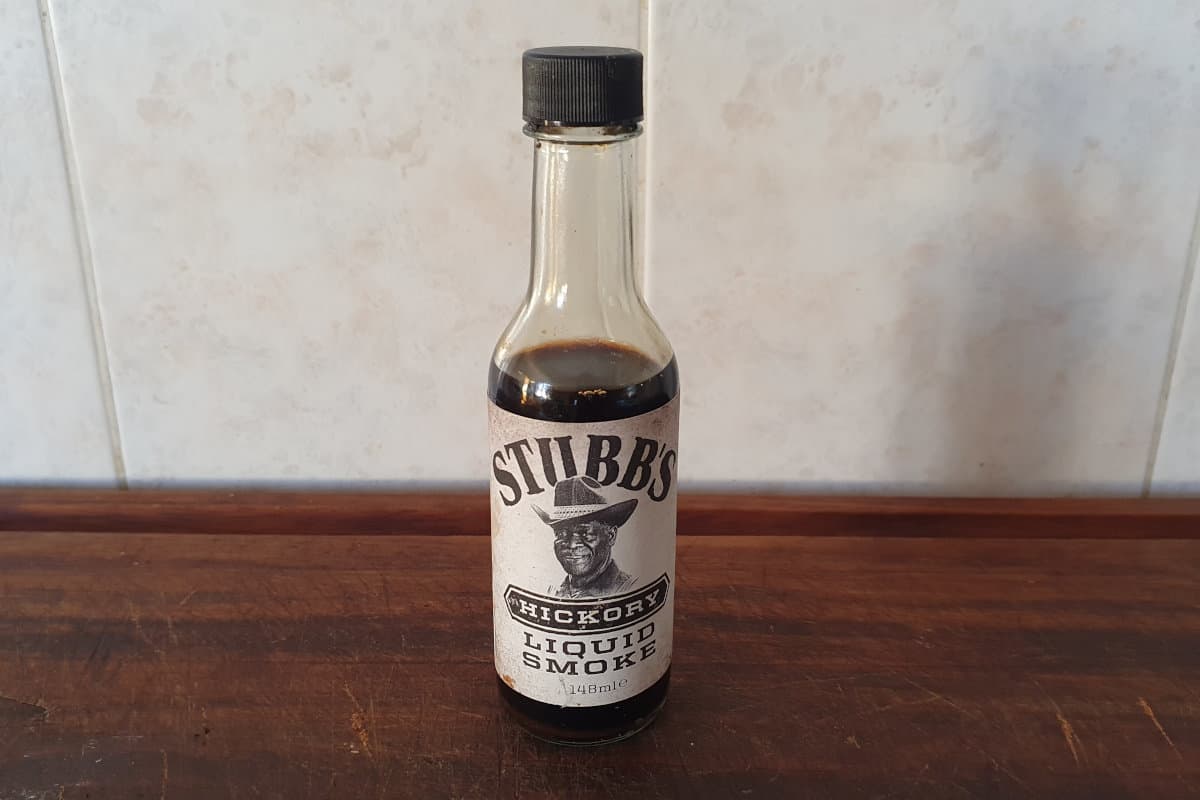
Liquid smoke takes the best of the real thing, leaving out the worst (carcinogenic and bitter elements). Stable components of smoke are distilled in water, bottled, and set on a store shelf for your convenience.
Depending on the brand, other ingredients can include vinegar, molasses, or herbs.
Is it close enough to the real thing? Professor Blonder of AmazingRibs answers:
“Because liquid smoke contains only a subset of all the combustion products produced in a wood fire, and in different proportions, the bottled flavor is not a perfect reproduction of a fire pit. However, combined with herbs, spices, sauces, and even charred veggies, the results can be close to real barbecue.”
Seasoning Blends

Seasoning blends made from smoked foods and herbs then ground down into a powder is another option. If you’re feeling adventurous, create your own smoked blends by using a stove-top smoker.
Common ingredients for making your own smoked rub include:
- paprika
- salt
- chipotle peppers
You may want to consider using these more as an after-grilling garnishing. Applying them before food goes on the grill increases the risk of cough-inducing smoke that comes from wet or too-dry food bits getting overheated.
Can I Marinade?
It is possible to marinade food that will be grilled but remember, the more moisture food holds, the more steam it will generate, which could lead to unwanted smoke. What could be a mild annoyance outdoors can stench up your living space for a long time to come.
If you have an extractor, using it on marinated food before it goes on the grill would be ideal.
Top Tips for Indoor Grilling
- Lightly oil the food
- Before heating the grill, apply a light coat of oil only to the ridges of the grill
- Reduce smoke by going easy on oil and sauces
- If you have an extractor — use it!
- Don’t be afraid to flip food often; it ensures food is evenly cooked
Conclusion
Indoor grilling offers the best of both worlds — the Maillard reaction and wood smoke-flavor.
Purists may nobly prefer to deny themselves the pleasure until they can get outdoors. But the more reasonable and relentlessly grill-happy cooks will cheerfully continue to explore ways to get our grill on indoors or out.
If you have any further tips on how to grill indoors that we’ve not covered, please feel free to share those tips with us in the comment section below.
Happy grilling!


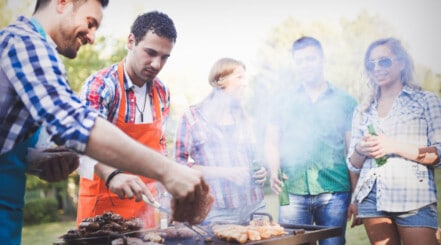
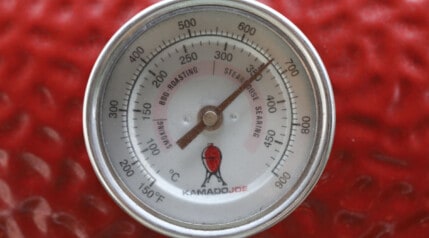
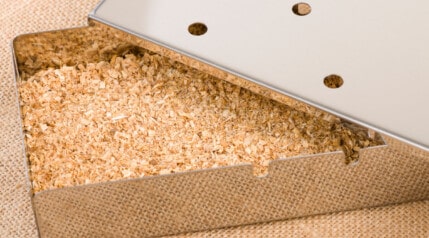
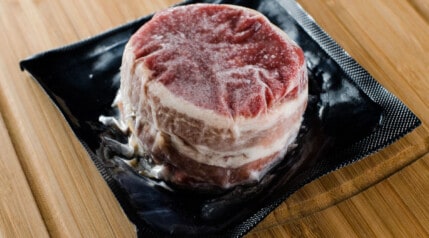
Great article…nice to see such thoroughness. I will read this article over a few times. Thanks. Keep grilling on the inside. 🥩🍗🍔